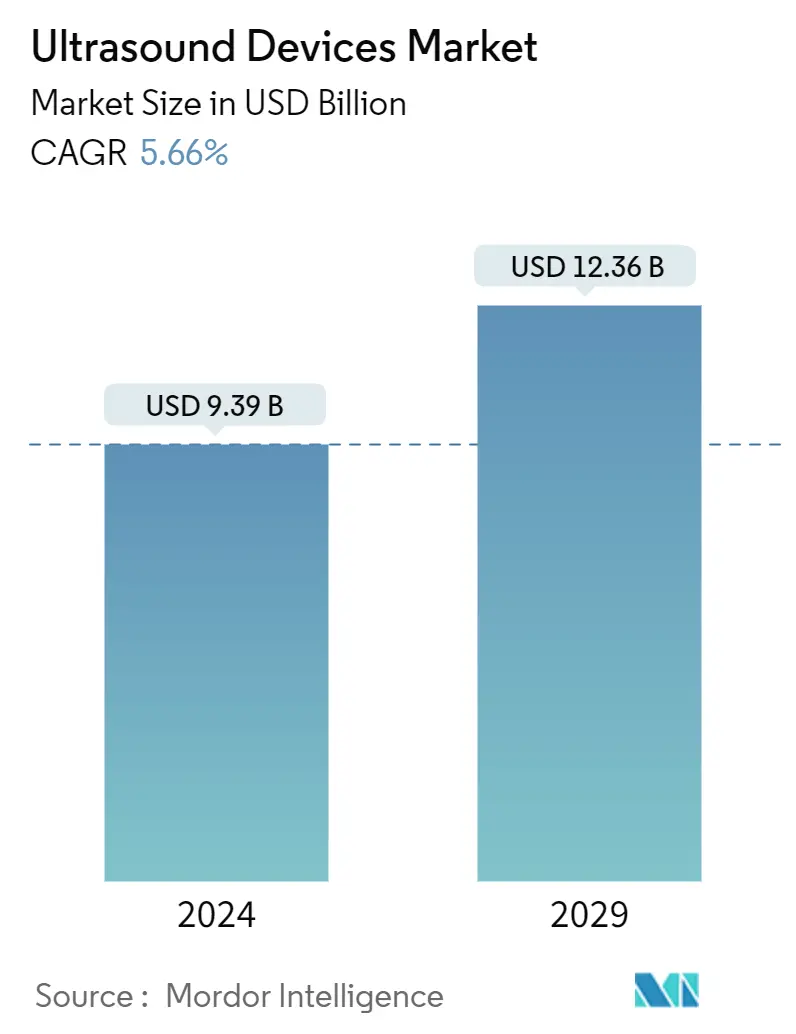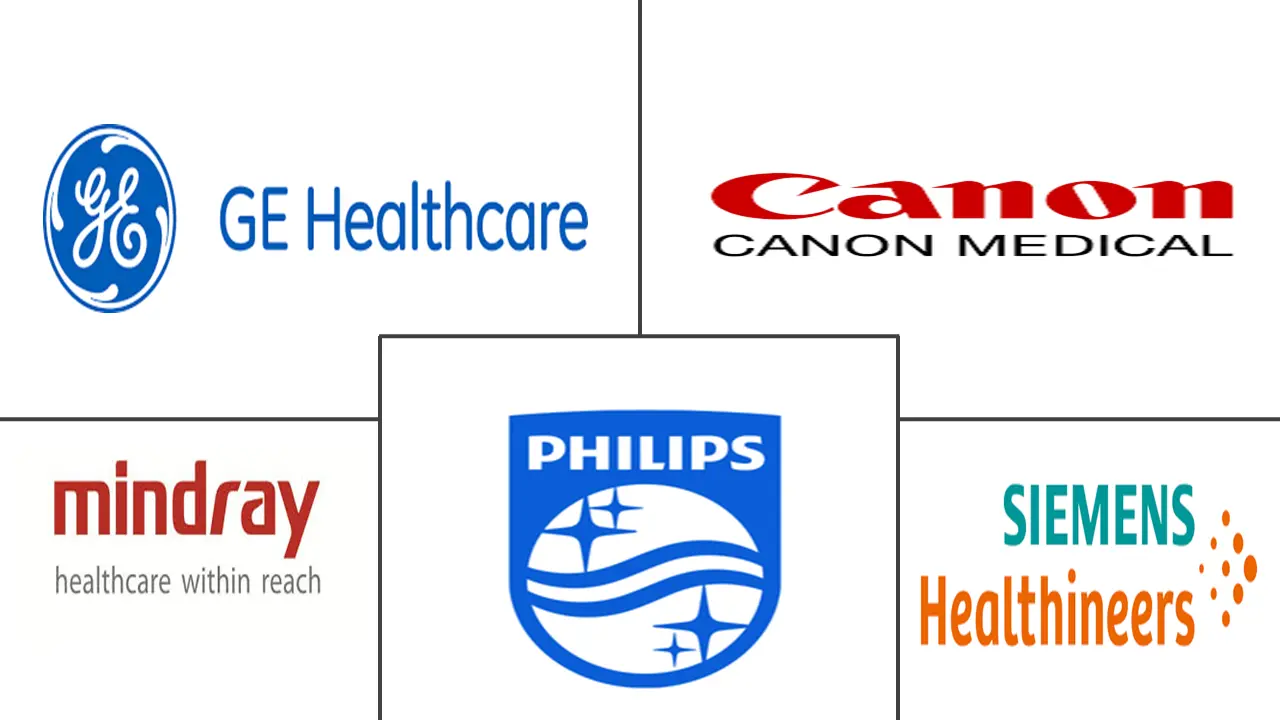Market Size of Ultrasound Devices Industry

| Study Period | 2021 - 2029 |
| Market Size (2024) | USD 9.39 Billion |
| Market Size (2029) | USD 12.36 Billion |
| CAGR (2024 - 2029) | 5.66 % |
| Fastest Growing Market | Asia Pacific |
| Largest Market | North America |
Major Players
*Disclaimer: Major Players sorted in no particular order |
Need a report that reflects how COVID-19 has impacted this market and its growth?
Ultrasound Devices Market Analysis
The Ultrasound Devices Market size is estimated at USD 9.39 billion in 2024, and is expected to reach USD 12.36 billion by 2029, growing at a CAGR of 5.66% during the forecast period (2024-2029).
Healthcare providers are deploying the potential of ultrasound diagnosis, primarily for point-of-care (POC) applications, for the triage, monitoring, and diagnosis of COVID-19 patients. As per an article published on Frontiers Media S.A., in March 2021, lung ultrasound testing can identify COVID-19 infection symptoms. Numerous aspects of ultrasonic imaging make it appropriate for routine use, such as making it simpler to clean than X-ray or computed tomography equipment and enabling triage of patients in long-term care facilities. Lung ultrasound (LUS) imaging can be utilized for COVID-19 diagnosis and examines several image processing techniques that may be able to detect COVID-19 symptoms in LUS pictures, although there are still some difficulties with its routine application. Additionally, in November 2020, GE Healthcare expanded AI, digital, and imaging solutions and unveiled a slate of new intelligently efficient solutions that include the LOGIQ E10 Series, ultrasound systems that harness artificial intelligence (AI) technology to drive workflow productivity during the COVID-19 crisis.
The increasing government and private funding for R&D in ultrasound imaging, the rising number of healthcare providers, technological advancements, and increasing incidences of chronic diseases are the major factors propelling the growth of the ultrasound devices market. The burden of chronic disease is rapidly increasing all around the world, currently affecting more than 14 million people around the world. According to the Centers for Disease Control and Prevention (CDC), in 2021, around 18.2 million adults aged 20 and older had coronary artery disease (CAD) in the United States. Heart disease is the leading cause of death among people in the United States. The high incidence of chronic diseases increases the demand for huge diagnostic procedures, which, in turn, drives the market. Additionally, as per the 2022 update from the International Diabetic Federation (IDF), approximately 537 million adults (20-79 years) are living with diabetes. The total number of people living with diabetes is projected to rise to 643 million by 2030 and 783 million by 2045. Also, according to the World Health Organization (WHO), 2022 approximately 422 million worldwide have diabetes in 2021, and 1.5 million deaths are directly attributed to diabetes each year. Both the number of cases and the prevalence of diabetes have been steadily increasing over the past few decades. Thus, the high incidence of chronic disease reflects an increased demand for its diagnostics which will propel the market to grow.
Also, Dementia Australia Statistics updated in January 2022 states that approximately 487,500 Australians were living with dementia in 2022, and almost 1.6 million Australians were involved in its center for care. It is estimated that the number of people with dementia is expected to upsurge to 1.1 million by 2058, and dementia will become the second leading cause of death in the country in the next five years. Focused ultrasound is the most preferred alternative to medicines for the treatment of dementia, as it is an early-stage, non-invasive, and therapeutic technology that has shown potential in improving the quality of life and decreasing the cost. Thus, the increased occurrence of the disorder and the demand for the early detection of disease and minimization of the cost of treatment is expected to increase the adoption of these ultrasound imaging devices. As the aging population is more prone to chronic diseases, the rising geriatric population across the globe is expected to boost the market.
The rising technological advancements, supported by the novel launches of products by the key players, are also expected to take the market to new heights. For instance, in June 2022, Sonex Health launched UltraGuideTFR, an ultrasound-guided device for use in trigger finger release procedures. The UltraGuideTFR device allows surgeons to view anatomy prior to incision, resulting in smaller incisions and a more minimally invasive surgery for patients undergoing trigger finger release.
Thus, the abovementioned factors are impacting the market growth of the Ultrasound Devices market. However, accuracy issues of the ultrasound devices are the factors expected to restrain the market growth.
